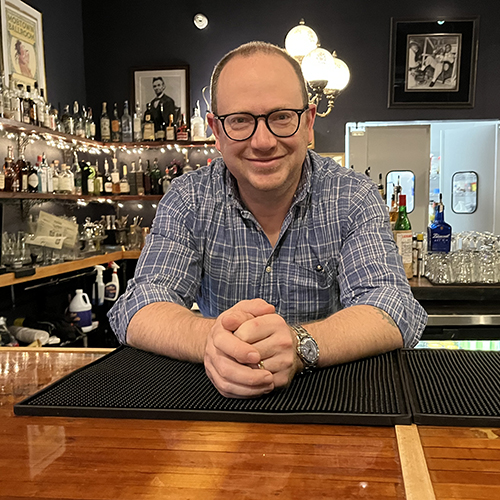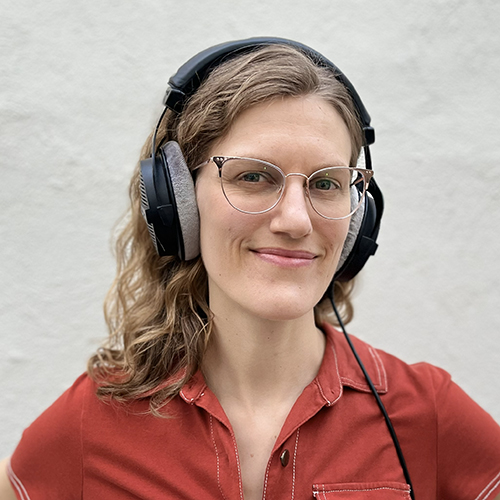Tucked behind athletic fields at the far reaches of the UW campus, the Ceramic and Metal Arts Building (CMA) is a second home for art students in the 3D4M program. But this summer CMA welcomed students from a wide swath of creative fields — poetry, painting, set design, sculpture, photomedia, dance — for a six-week colloquium that sparked unusual artistic collaborations.
The colloquium, Multiplying Mediums, was offered jointly by the Department of English and the School of Art + Art History + Design, with funding from Bill and Ruth True. The ten participants — all UW graduate students — received generous summer scholarships to focus on their creative work.

“Especially at the graduate level, different disciplines can stay pretty isolated from each other,” says Erin Lynch, an MFA student in poetry. “Multiplying Mediums was a great opportunity to grow with and from other artists, as well as garner inspiration from others’ processes and passions.”
The faculty who developed the course also learned from each other. Andrew Feld, associate professor of poetry and director of the Creative Writing Program, and Michael Swaine, assistant professor of 3D4M (three-dimensional forum), were strangers when they agreed to plan and lead the colloquium. “We had to figure out how to mesh these two creative disciplines that don’t talk to each other that much,” recalls Swaine. “It was a little bit like a blind date. We put the students in that situation as well.”
For the first few weeks, Feld and Swaine had students collaborate in various combinations for small projects, with the stipulation that they never work with someone in their own discipline. For the final three weeks, the students collaborated in teams of two or three to develop a more ambitious final project. The resulting works ran the gamut from an installation with words grouped and suspended from the rafters like mobiles, to a performance piece that combined video, text, and movement.

The latter piece, which loosely explored the female body’s relationship with water, was created by a poet, a dancer, and a photomedia artist. The trio found they were simpatico from the start. “We came to the project with so much conceptual and aesthetic overlap, and asking a lot of the same questions,” says Lynch. “The synchronicity was crazy. We kept looking at each other and saying, ‘Wow, this is eerie.’”
Collaboration is a political, artistic, and emotional necessity. Good things will happen if we continue to work like this.
Another project paired a poet and a sculptor who created a cave-like space from metal wire, wood, and plaster. Visitors stepping inside the structure were surrounded by suspended, interwoven strips of fabric with writing on them. Poet Cameron Louie says the project changed him. “At one point, after spending a couple of weeks obsessively covering this huge structure in plaster, I was joking to the rest of the group that I was going to need to reconsider my whole identity, as in, ‘Am I even a poet anymore? Am I a sculptor now?’ Which is obviously ridiculous, because I haven’t the skills or the training to be a sculptor — but that was kind of the whole point. Multiplying Mediums wasn’t just about producing new, groundbreaking work, but about doing things that you’d never usually do, breaking out of calcified forms — which is fundamental to being an artist.”
That message was underscored by numerous guest speakers who visited the class, from writers to instrument makers to mixed-media artists. “We looked for people doing inspiring projects that weren’t necessarily something the students could copy in method but from which they could glean inspiration,” says Swaine. Donor Bill True, an art collector and poet, visited frequently to hear the guest speakers and to follow the students’ progress. “Bill had a much fuller role than I originally imagined, which was great,” says Swaine. “He even invited the whole group to his house for an amazing dinner, where we were given a tour of part of his world-class art collection. It was a once-in-a-lifetime experience for all of us.” Adds Lynch, “Despite his stores of knowledge and his clout in the art world, Bill had a genuine, humble delight in watching the creative process as well as learning about us as people.”

At the end of the six-week program, the Trues and others attended a public exhibition at which the students presented and spoke about their final projects. The event provided a motivating deadline for the students as well as an opportunity to celebrate their accomplishments.
“I think the biggest takeaway for me was the freedom to play,” says Clare Halpine, a graduate student in photomedia. “In creating work in such a short time — 22 days in our collaborative groups — there isn’t a lot of time to question or doubt. You have to move with it—trust the idea, yourself, your intuition, and your partners.”

Swaine and Feld hope Multiplying Mediums will be offered again, having witnessed how it builds bridges between creative disciplines that interact infrequently at the UW. Many of the participating students, buoyed by the experience, are still in touch and considering future collaborations across the creative arts.
“There’s a long tradition of artists crossing disciplines to do strange, amazing things, and in a time where it’s so easy — even encouraged — to work alone, I’m completely convinced that collaboration will keep us human,” says Louie. “Collaboration is a political, artistic, and emotional necessity. Good things will happen if we continue to work like this.”
More Stories

A Love of Classics and Ballroom
Michael Seguin studied Classics at the UW and now owns Baltimore's Mobtown Ballroom. The two interests, he says, are more connected than they might seem.

Bringing Music to Life Through Audio Engineering
UW School of Music alum Andrea Roberts, an audio engineer, has worked with recording artists in a wide range of genres — including Beyoncé.

A Healing Heart Returns
In February, the UW Symphony will perform a symphony that Coast Salish elder Vi Hilbert commissioned years ago to heal the world after the heartbreak of 9/11. The symphony was first performed by the Seattle Symphony in 2006.